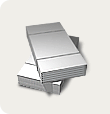(including off -off demand) reached 1249 tons, increasing by 3% in annual calculus against the background of high prices. A significant influx of gold investment was largely contributed to quarterly growth, since the increasingly unpredictable geopolitical situation and the dynamics of prices maintained demand.
Investments in gold ETF remained a key factor in the total demand: the influx of investment for the quarter was 170 tons, while in the second quarter of 2024 a small outflow was observed. The main contribution was made by Asian funds, the share of which amounted to 70 tons, which is comparable to the streams of investment from the United States. Taking into account the inflow of investments in the first quarter of the world demand for gold, ETF reached 397 tons, which is the highest indicator for the first half of the year since 2020.
The total volume of investments in ingots and coins also increased by 11% in annual calculus, increasing by 307 tons. The growth leaders were Chinese investors, who increased the volume by 44% in annual calculus to 115 tons, while Indian investors continued to increase their assets, reaching 46 tons in the second quarter. District trends were observed in the western markets: pure investments in Europe have more than doubled, reaching 28 tons, while the demand for ingots and coins in the United States in the second quarter was halved to 9 tons. The second quarter of 2025. Despite this slowdown, the volume of bought -up of gold by central banks remains at a significantly high level in connection with the persistent economic and geopolitical uncertainty. Our annual survey of central banks2 shows that 95% of managers of reserves believe that the global gold reserves of central banks will increase over the next 12 months.
demand for jewelry continued to decline: the consumption was reduced by 14% and approached the minimum, which was last observed in 2020 during Covid pandemia. Demand for jewelry in China decreased by 20%, and in India - by 17% in annual calculus. However, in the cost terms of the world jewelry market, to 36 billion US dollars grew.
the total volume of gold supply increased by 3% to 1249 tons, while the extraction volume increased slightly and reached a new record value in the second quarter. The processing volumes increased by 4% in annual terms, but remained relatively low, given the high prices.
world markets survived the unstable beginning of the year, marked by trade stress, unpredictable changes in the US policy and frequent geopolitical shocks. Active investment activity observed






